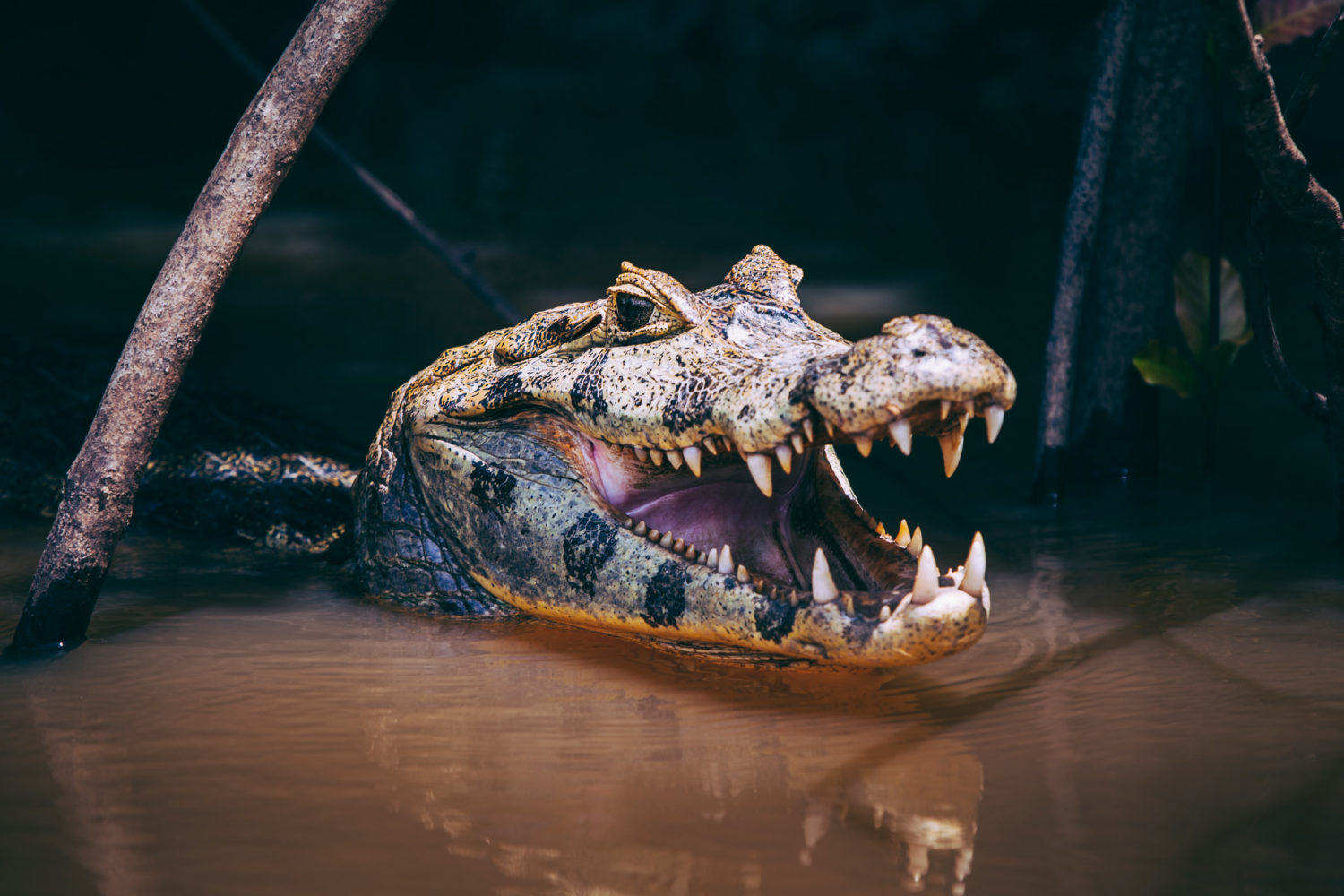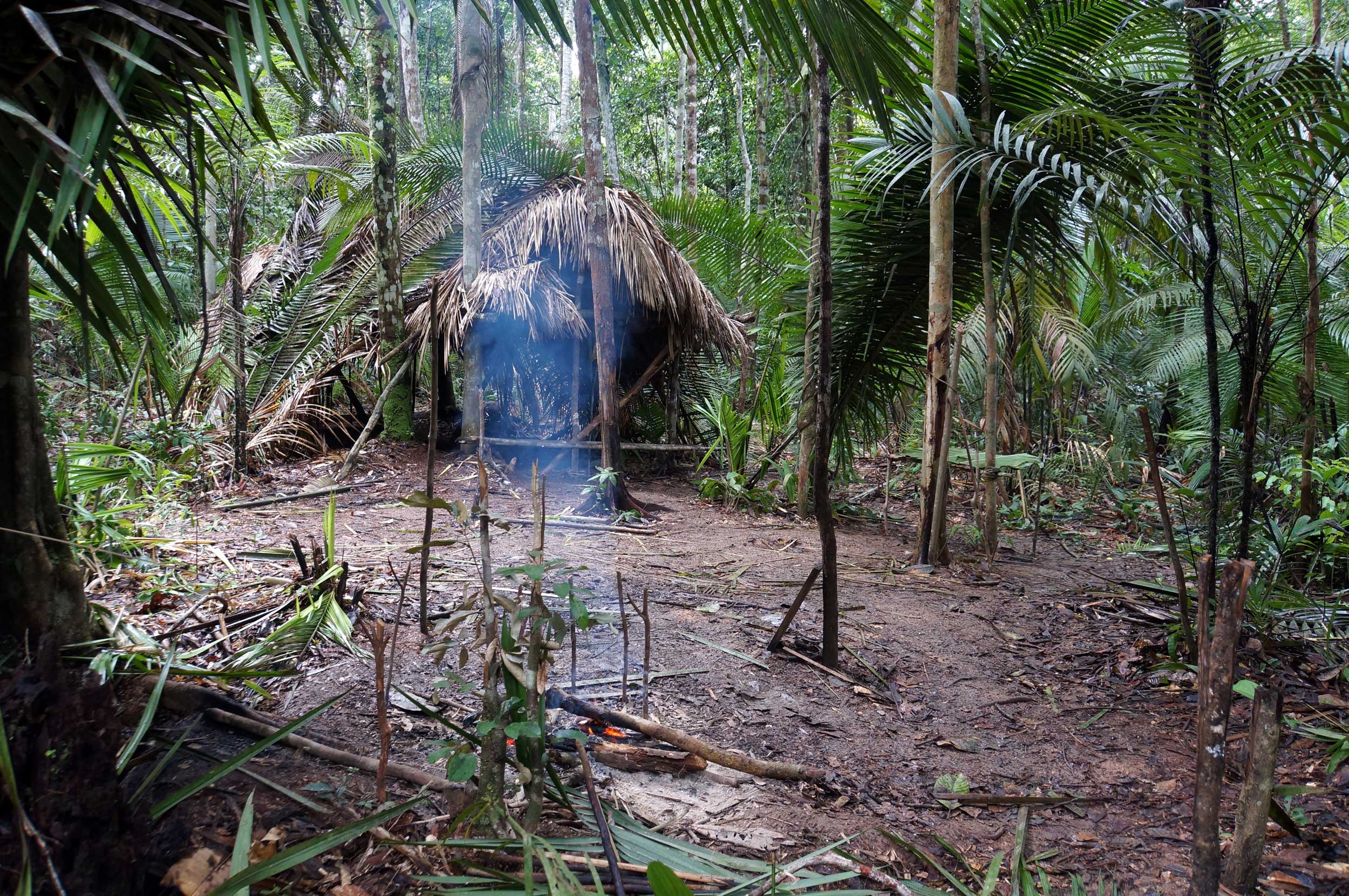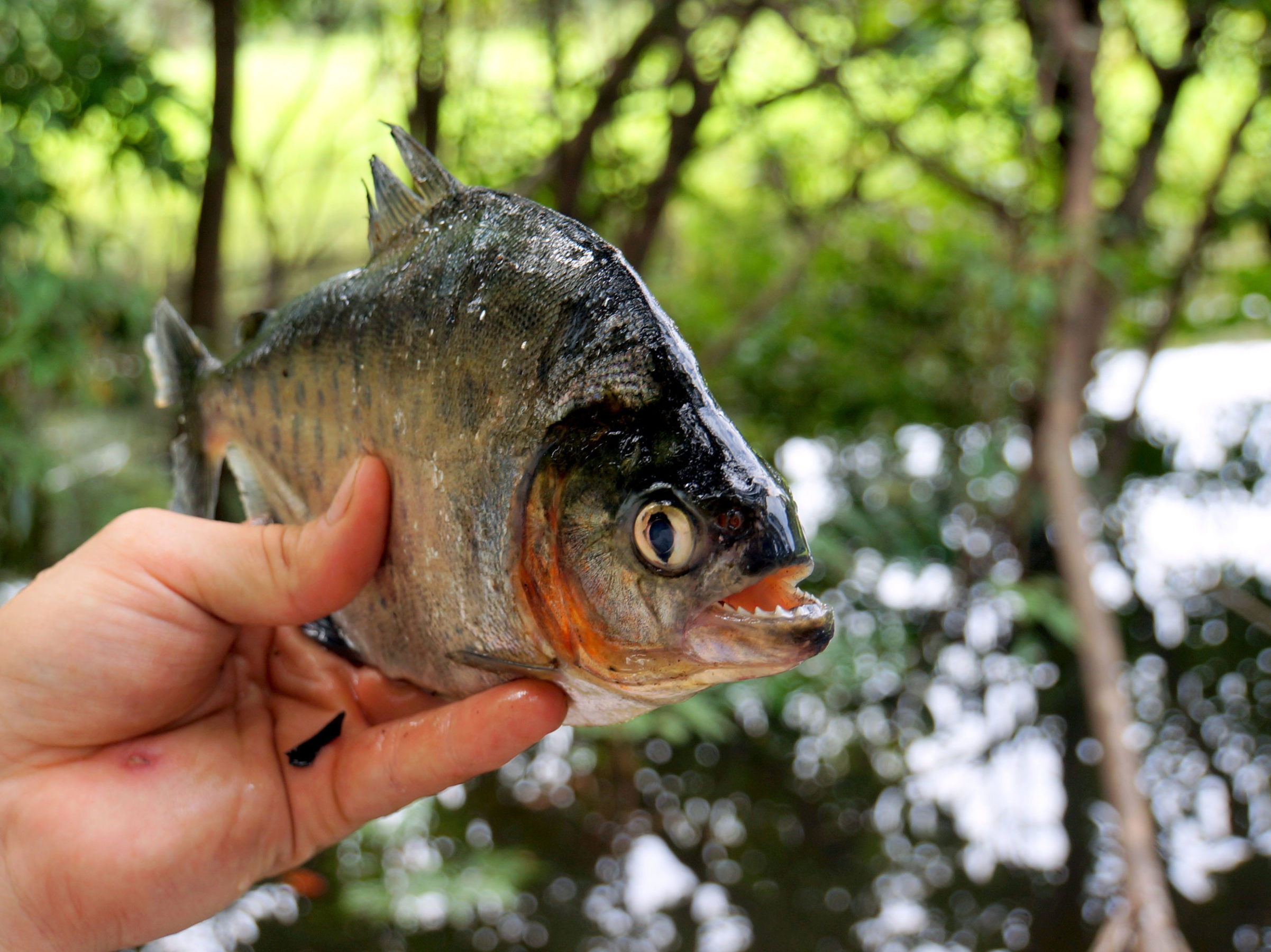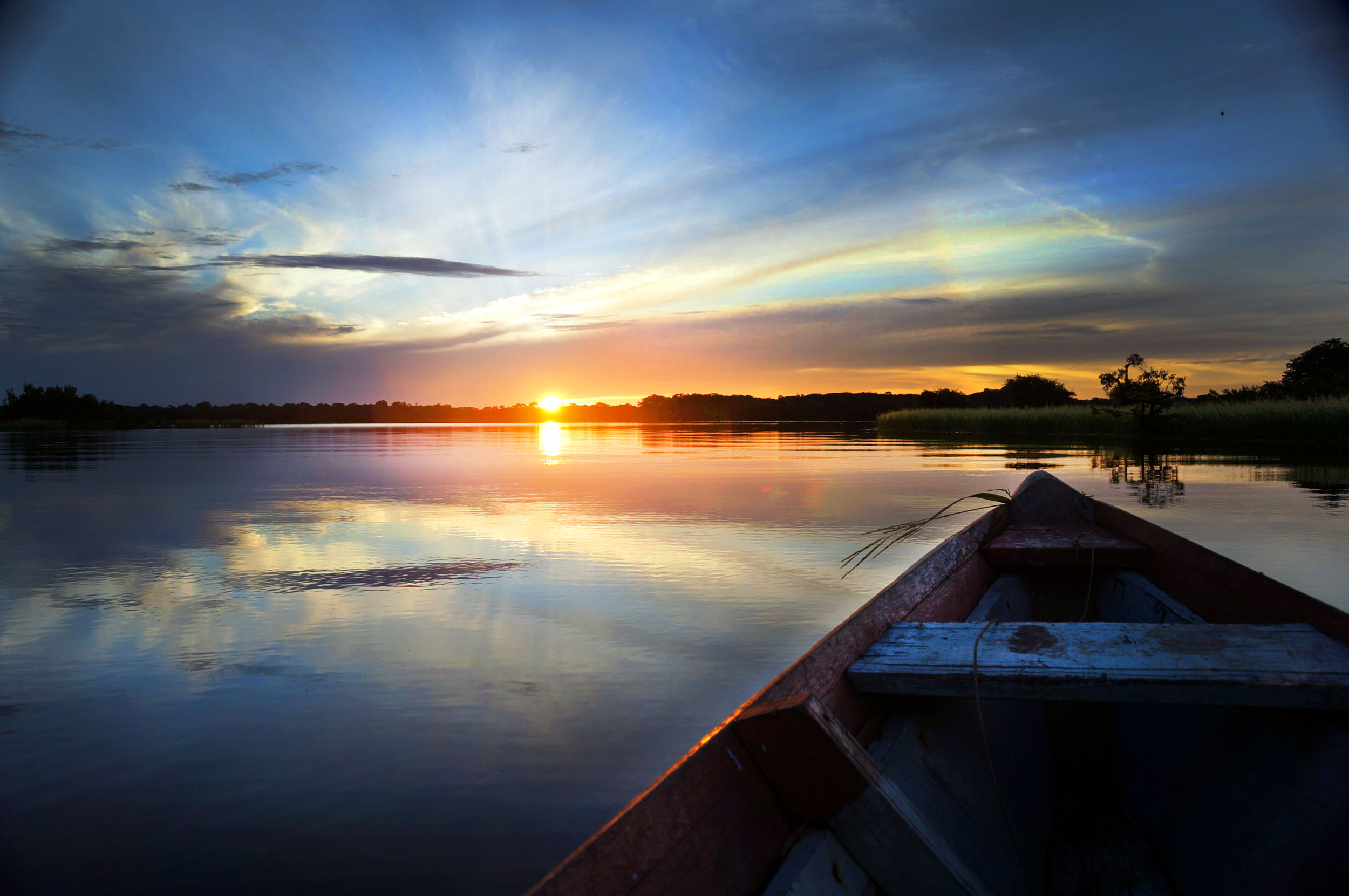Alive in the Amazon
Boy Scouts didn’t prepare me for this: reef knots and immolating sausages are not adequate preparation for the depths of the Amazon rainforest. The world’s largest jungle has survived for millennia by responding with lethal force to anything that tries to invade or destroy it. In simple terms, every plant, tree, bug and fish is still there because it has the means to kill just about anything that attacks it — and this explicitly includes tourists (my signed waiver said so).

Most trips to the Brazilian Amazon start in the city of Manaus. Sitting in the heart of the jungle, it was once a staggeringly prosperous city, with its surrounding rubber plantations helping to drive the mobilisation and industrialisation of the Western world. Pneumatic tyres were invented in the mid-1800s and Manaus rode the crest of the rubber boom, until — in a daring act of espionage by a British adventurer — seeds were smuggled out of Brazil and replanted in Malaysia. The rubber monopoly was broken and the city descended rapidly into a state of decay that is clearly apparent today.
The first part of our tour out of Manaus was to see the ‘meeting of the rivers’, the confluence of the dark Rio Negro and the brown waters of the Amazon, which creates a remarkable, swirling milkshake — chocolate and blueberry — on a truly grand scale. I joined three other travellers of a similar age on the journey to our first campsite. Mike was a well-fed Alaskan; dressed in a mud-stained pale Khaki outfit and carrying a two-metre blow gun, he looked every bit the ‘great white hunter’ already gone slightly ‘tropo’. Brits Amir and Gill — two London lads ostensibly visiting Brazil for the Rio Carnival — had got slightly side-tracked. They seemed particularly ‘well prepared’ for our little soiree, with suitcases full of neatly folded, semi-casual clothes and rows of snack packs lovingly prepared by their wives.
After several hours of navigating the tiny waterways that sidle off the Amazon’s main river stem, we arrived at our campsite. A definite air of slow decay permeated our timber, dorm-like rooms, complete with a common area, board games and cold drinks. However, the site also had the atmosphere of a place to stay for those wanting to brag about going into the Amazon without really having to get their feet wet. After satisfying the camp guide that we were in fact ready for some deep jungle, a further guide and supplies were arranged.
The supplies comprised some rice, a pineapple, and a chicken. The plan was to kill the chicken and use ‘non-essential’ parts as bait to catch piranhas. If this brilliant strategy didn’t prove 100 per cent successful, then we would have to start fishing with the essential parts of our hapless chicken, or resort to eating them instead — either way, rapidly exhausting our only guaranteed food source.

Our guide, Mata, was an Amazonian native with passable English, and to break the ice I offered him that most essential of all jungle accompaniments — my hand sanitiser. His immediate response was that it would destroy the natural balance that his body had already achieved with all of the bacteria that, according to my waiver, had a reasonable chance of killing me. Conversation over.
Venturing out in a canoe that carried us deeper into the real Amazon, we eventually reached our jungle campsite, which comprised a tree fern shelter, some hammocks, and mosquito nets. The first order of business was to catch dinner and, with Mata having despatched our poor chicken, the ‘non-essential’ parts were arrayed for use as bait. Unfortunately, neither the great white hunter nor the rest of us turned out to be great fishermen — huge surprise — and the only piranhas we landed were too small to eat. Even so, removing our hooks from the minnows that we did catch was an exacting exercise, as dead or alive, their teeth remain series of serrated razors, and being infested with carrion, they could be deadly in more ways than one.
Dejected, we returned to camp for a barbecue of chicken remains and pineapple, then an early night. Mata gave us the rundown on ‘calls of nature’, where simple mistakes had the potential to invoke the jungle’s wrath. In particular, there was to be no standing on sleeping snakes, and if bitten, we had to try and identify the snake immediately so that Mata could decide whether sucking out of venom or amputation was the best response. However, using my headlamp to avoid snakes was also a bad idea, as mosquitoes the size of golf balls were instantly drawn to it, and far too many of them seemed to prefer slamming into my eyeballs over actually reaching the light.

Mata also warned us to avoid urinating in any puddles, as organisms living in them had a tendency to race up the donor’s stream and cause a new world of pain. Finally, we were warned not to stand still. I had already noticed that much of the jungle floor seemed to be carpeted with red ants up to 2 centimetres long. They weren’t a problem while on the move, but as soon as we stood still, the insect carpet began to move upwards, and it loved to bite.
Having survived this initial trial of nature, I climbed into my hammock — protected by two layers of mosquito nets — and drifted off to sleep, only to be woken almost immediately by Amar yelling and carrying on: “There’s something on my back!”
“There’s nothing there, mate,” Gill replied sleepily.
“Look again!” cried Amar.
After much turmoil and many reassurances, our intrepid explorer slowly settled down and we drifted off to sleep again — to be woken once more by shrieking of a completely different kind. An enormous clamour was coming from directly outside our enclosure: high-pitched yelps and the sound of crashing. We soon discovered that we were under attack by a posse of howler monkeys, who were systematically throwing around every object we had left outside the campsite. Trying to sound calm, I asked Mata if he was going to do anything about it. “Are you crazy?” he replied. “I’m not going out there.” If Mata was worried, then we had every right to be petrified.

In the morning, we collected the remains of our crockery and celebrated our survival with coffee and freshly-picked Brazil nuts. The other casualty of the night was Mike’s shoes. He had left them on the ground and the ants had found their unique fragrance highly appealing. The surface of the shoes was now completely concealed and replaced by a shimmering mass of ants. The easiest solution at hand was to hold the shoes over a fire and let the smoke drive them away, which proved successful.
As we learned during our time in the region, anything and everything in the Amazon seems to have the ability to kill. The bark on many of its trees is lined by fine hairs that are poisonous, while swimming in local streams is simply not an option. However, most tantalizing of all are the numerous holes in the jungle floor that can house a multitude of deadly inhabitants. Mata would poke a stick in the larger holes, as much to see our reaction as to find out who or what was home. Sometimes a lizard would pop out; just as often a tarantula the size of a football. But it was the potential for a bushmaster (pit viper) or giant centipede attack that really had everyone’s breath held tight.
Yet, in spite of the constant danger, the jungle also revealed a peaceful dimension. Nothing seemed to be in a hurry — and not just because this is the home of the sloth. Time has little meaning, the cycles of the forest and its own microclimate loom large, and the local wildlife does its own thing to its own ‘beat’. In the middle of the nearby river, we passed a piece of driftwood with a spider the size of a dinner plate covering its surface. The spider seemed to be patiently waiting for an errant branch or oar, or a spur of land to climb on to. This timeless tranquility was only broken by our discovery that Gill had a quite irrational and extreme phobia of ladybugs — leading to the near-capsize of our boat on one of our outings.

Fearing the return of the howler monkeys, we decided that evening to take a night-time boat trip in search of caimans. The tiny alligators are nocturnal, emerging at night to hunt on the banks of rivers and streams. Using headlamps, we could make out their reptilian eyes reflected among the reeds. Mata was able to catch one, holding its jaws firmly and safely shut. Apparently, they are relatively easy to handle so long as they are under 60 centimetres long, so we nervously passed our new-found friend around the boat before finally releasing it.
After two nights and three days of deep jungle, it was time to return to the main camp, grateful to find cola and chocolate awaiting us. We had planned to spend another few nights there, but our newly formed group of adventurers fell apart after Gill retrieved his dry laundry and a poisonous centipede as thick as his wrist dropped out of it, narrowly avoiding him. He promptly declared, “My Amazon trip is over,” and departed with Amar. I followed suit, back to Manaus, my Scout skills well and truly tested.
